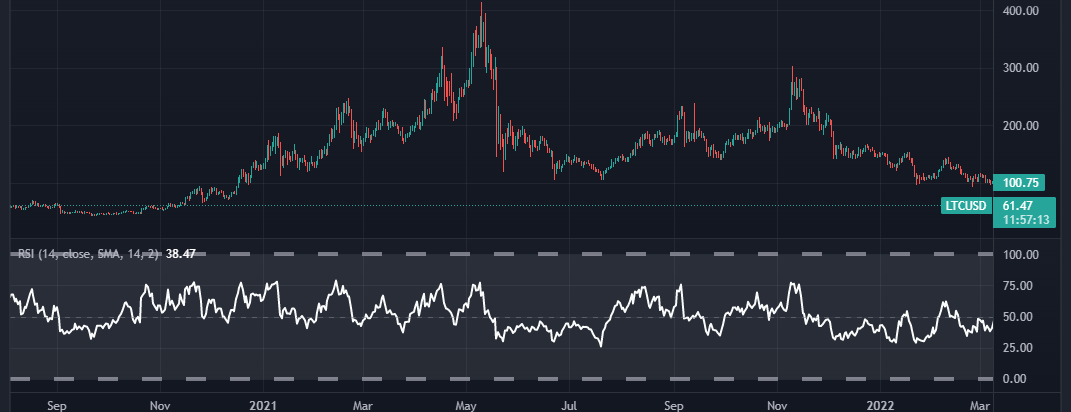Before investing in any crypto, you must complete a fundamental analysis to gain a bigger picture of what is happening within a blockchain network.
You need to know how to do technical and fundamental analysis to thrive as a crypto investor. While the tools and methods of technical analysis used in crypto trading are similar to those used in forex, stocks, and many other markets, the variables used in fundamental analysis are very different.
So, what do you need to consider when doing a fundamental analysis of a crypto project?
What Is Fundamental Analysis?
Fundamental analysis is an analytical method used in financial markets to evaluate the intrinsic value of an asset. It considers different internal and external factors that can affect the price of an asset to determine whether an asset is overvalued or undervalued.
In contrast to technical analysis, which looks at past data to predict future events, fundamental analysis is more of a big-picture approach, taking into account information like the crypto user community, financials, real-world application, and future use.
Taking Ethereum as an example, most decentralized finance (DeFi) applications run on the Ethereum blockchain. If you believe that DeFi has a future, then this may indicate that the value of Ethereum will rise over time.
The Framework for Crypto Fundamental Analysis
The short-term volatility and huge long-term growth of the crypto market have made fundamental analysis quite important. Thousands of crypto projects have failed in the market, and new projects are also being introduced, making the market dynamic. Sound knowledge of crypto fundamentals will help you determine a token's value before investing.
The framework for fundamental crypto analysis uses three key metrics: Onchain, Project, and Financial.
1. On-Chain Metrics
Crypto platforms have systems that make getting blockchain data and network information easy. These systems help you avoid the rather daunting task of getting such information manually. First, let's quickly consider some important cryptos' on-chain metrics.
Transaction Value and Fees
A currency in steady circulation will have a consistently high transaction value. Comparing the circulation rate over time will give enough data to predict future market movements.
Many blockchains have transaction fees. Fees also reflect the demands of transactions paying to be added to blockchains as fast as possible, just like the gas fees paid on the Ethereum blockchain. Access to information about the fees will give you an idea of how secure a token is. If there is an increase in transaction fees and a decrease in block rewards, crypto miners will begin to work at a loss and withdraw from the blockchain.
Active Address
Active addresses are addresses that are currently in use on a blockchain. To compute this, you must count the numbers of both the sender and the receiver of transactions across certain periods. You can also track the number of unique addresses over time and compare the results to gauge activity and interest in a crypto. Cryptocurrencies that attract more interest have higher potential.
Hash Rate and Staked Amount
The two most popular cryptocurrency consensus algorithms are proof of work and proof of stake. Both Bitcoin and Ethereum use proof-of-work, which uses the hash rate to measure network health. A high hash rate signals a more secure and difficult-to-bridge system. However, when the hash rate declines, crypto mining activities might also start to reduce, especially when miners consider it unprofitable. A lower hash rate lowers investors' interest in the crypto asset.
For a cryptocurrency that uses a proof of stake system, transaction validators stake their holdings in the process of block validation. The amount staked at a given time could also indicate how much interest a crypto asset attracts.
2. Project Metrics
Using project metrics is a qualitative way to determine how well a cryptocurrency project is doing. In this section, we'll look at other aspects of cryptocurrency, like its purpose and how it works.
Whitepaper
You have to read the whitepaper of any project before investing in it. The whitepaper is a technical document that gives you an in-depth view of the project. This document contains the project's objectives, how to achieve such objectives, use cases, amount of supply, the technology used, and much other useful information. So when people say "do your own research" before investing, checking out the whitepaper is just one of the things they're talking about.
The Team
The team of people working on the project inspires confidence in the customers and the financial backers. Information about the team members, their experience, competence, and public profiles can help you know how credible they are.
Tokenomics and Use Cases
The value and price of cryptocurrencies are determined by supply and demand in the market. The price will increase in proportion to the level of demand and supply. The incentive structure utilized to incentivize behavior on a network is also a component of the tokenomics.
The functions a token can perform also determine its value. There is a possibility that a coin that has more real-world use cases may draw more users and attention. Irrelevant tokenomics and a lack of a properly specified use case for the cryptocurrency are red flags.
3. Financial Metrics
These metrics concern the flow of money in the crypto market. Market capitalization, liquidity, volume, and other related information are useful tools in fundamental analysis.
Market Capitalization
The total number of tokens in circulation times their current price gives the market capitalization. The value of a network is shown by its market capitalization value; you can use this metric to figure out how old a project is and its growth potential.
Liquidity
The ease with which an asset can be traded is a measure of its liquidity. The liquidity of a cryptocurrency asset is strong if it can be bought or sold quickly without changing the market value. There will be a lot of buyers and sellers in an order book for a cryptocurrency coin or token that is easy to trade.
Volume
A token's trading volume indicates how well it will hold its value over time. This indicator reveals how many individual units of an asset have been traded within the time period under consideration. An upward trend with high trading volume will most likely last longer than one with low trading volume.
Don't Focus on Fundamental Analysis Alone
Fundamental analysis will give you a bigger picture of what is happening in the crypto markets. With it, you will get information that will help you differentiate valuable tokens from those with low potential. However, using it as a stand-alone analysis method is not the best.
As in the stock and forex markets, relying on fundamental analysis alone will limit you. You need to build a robust strategy that combines fundamental and technical analysis. Doing this will help you identify coins with potential, and you will also be able to time your trade entries and exits well.





